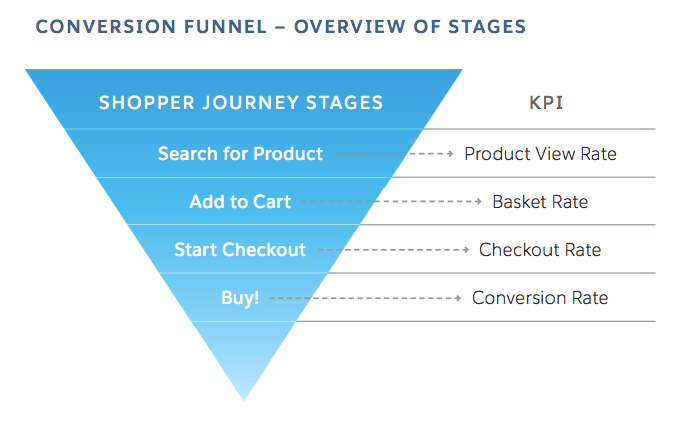
Get your FREE 30-day trial.
Please complete all fields.
Chances are, if you ask any management-level person in any type of business, anywhere in the world, “what is your top priority?” they would answer with one word — growth.
That may sound glaringly obvious. After all, if you’re not growing, you’re stagnating. And you can only stagnate so long before you cease to have the means to compete effectively or, really, do anything at all. While there are many paths to ecommerce growth (product innovation, market expansion, partnerships, acquisition, etc.), there is a proven formula for growth that applies to every ecommerce enterprise.
A new report from Salesforce, Ecommerce and the Quest for Growth, lays out a data-driven approach and reliable formula for growth that all retailers can use to hone in on specific areas of growth for their business. This is based on data from thousands of global ecommerce sites, hundreds of millions of transactions, and years of consulting expertise.
Key growth metrics
What are the key elements driving ecommerce revenue growth? Desirable products, attentive service, and smart marketing most certainly play a role, but the basics almost always move the needle. Ecommerce and the Quest for Growth uses a proven formula to help brands of all sizes identify industry benchmarks and trends, thus uncovering areas of optimization to drive revenue.
This formula also makes a compelling case for growth targets and investment with executives or your board of directors. While it is tempting to copy the tactics of growing businesses in your space, this data-driven approach outlines the strongest contributors and ingredients to revenue growth and allows you to identify the levers to adjust specifically for your business.
Specifically, the report examines the following growth metrics:
Traffic: How do you drive quality traffic that ultimately yields revenue?
Conversion rate: How do you improve it?
Orders: How to increase the overall number of orders placed on your site?
Average price per unit: How do you ensure your promotional strategies drive profitable growth?
Units per order: How can you automate improvements here?
Average order value: How do you increase the AOV customers spend each time they place an order?
While all of these metrics are important, it’s conversion rate that retailers and brands acknowledge as the holy grail for revenue growth. In a chapter dedicated to conversion, the report digs deep, noting that it’s actually made up of a series of smaller metrics including product view rate, add-to-cart rate, checkout conversion, and cart abandonment rates.

These sub-metrics represent the many stops and starts that shoppers will make on their way to a purchase, which makes it all the more important for retailers and brands to understand how they impact growth, and how to remove any friction within.
As noted in the report, another major revenue growth driver is traffic. In fact, when it comes to revenue, direct traffic clearly has the most impact, at 73%. Interestingly, the drivers of traffic volume and revenue take a different order of priority depending on the region. This is representative of the way ecommerce and general internet usage has evolved in different parts of the world.
Most noteworthy is the Asia-Pacific region, where local incumbents play a bigger role in the way the internet is accessed and ecommerce demand is generated. In the Asia-Pacific region, 50% more revenue is attributed to search-driven traffic, while traffic volume remains similar to global averages.
Every retailer wants to know how they stack up against the competition. This report lays out growth trends by category including general apparel, active apparel, home, and health and beauty, as well as growth by device.
It also uncovers some surprising data about the real value of social media traffic to retail sites, and the global impact of incumbent search engines. One surprise finding: the domination of the biggest player is chipped away by regional providers due to local nuances.
We know that retailers and brands have limited resources and are under unrelenting pressure to deliver growth — and could benefit from a trusted partner to grow the business.. The Salesforce shared success model ensures deep commitment not only to initial implementation, but to long-term growth and innovation, with tools, services, expertise, and support throughout your journeys, from organizational readiness to regular post-launch assessments and ongoing optimization to power growth. See a snapshot of critical milestones and discover how Salesforce partners with brands of all sizes to optimize and grow each step of the way.
In the meantime, download Ecommerce and the Quest for Growth and keep your eye out for the second post in our ecommerce growth series.